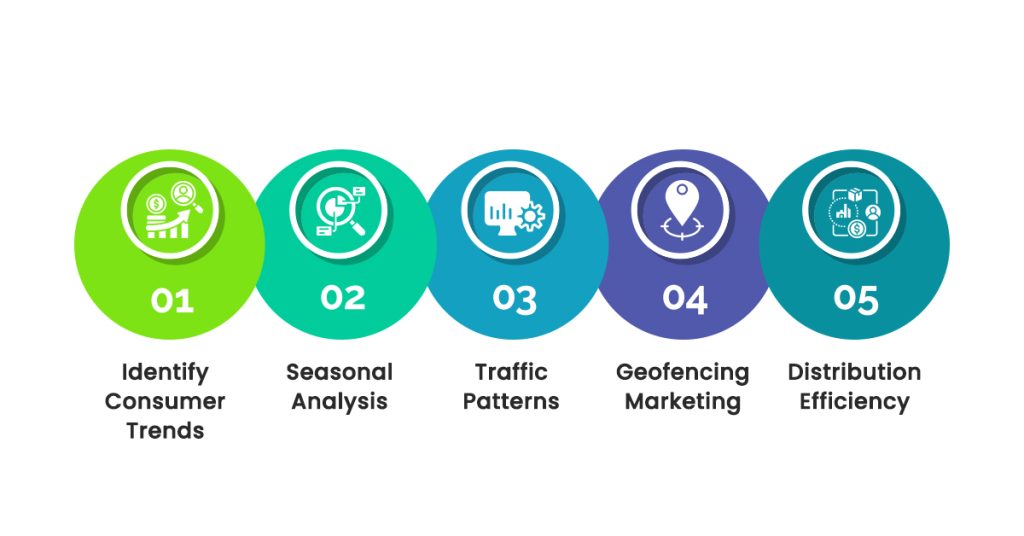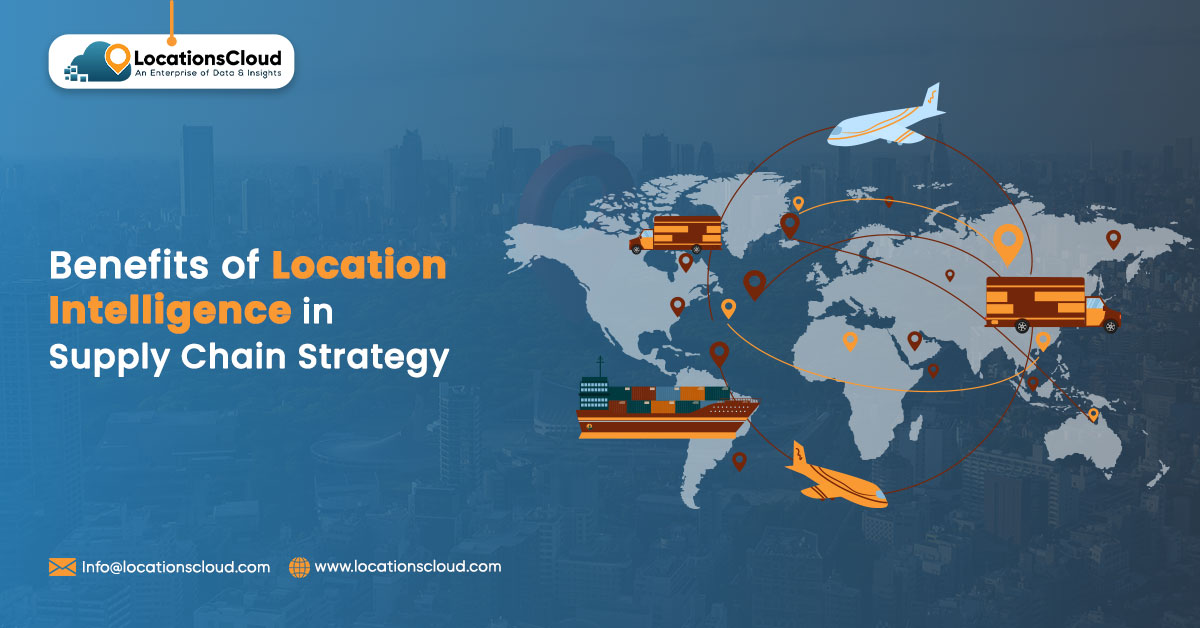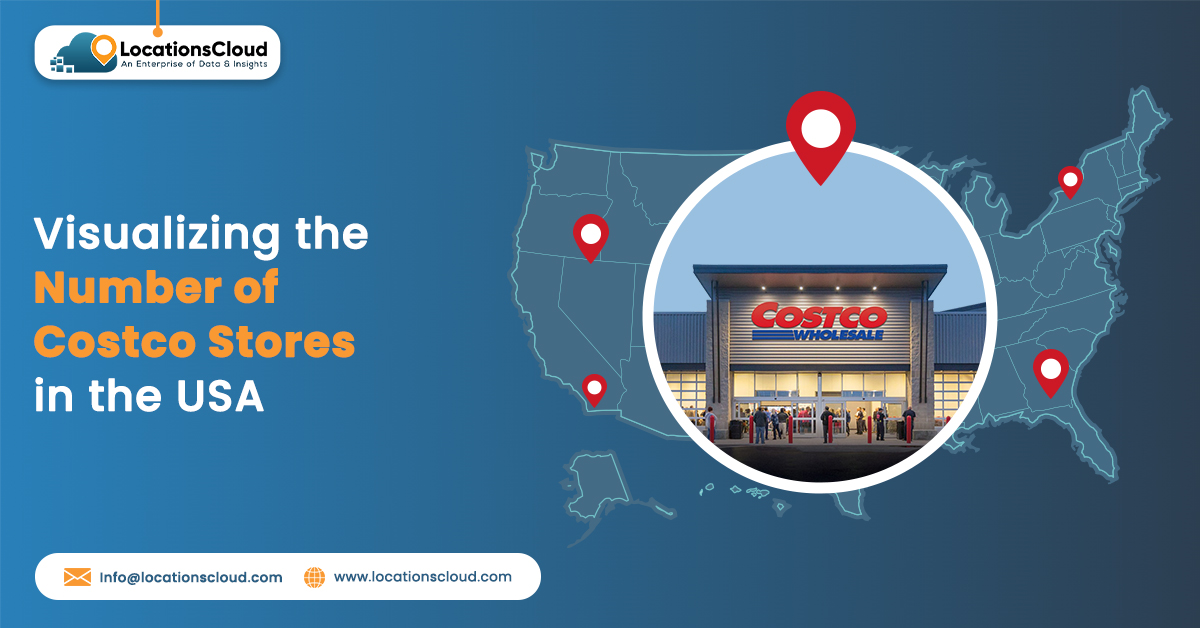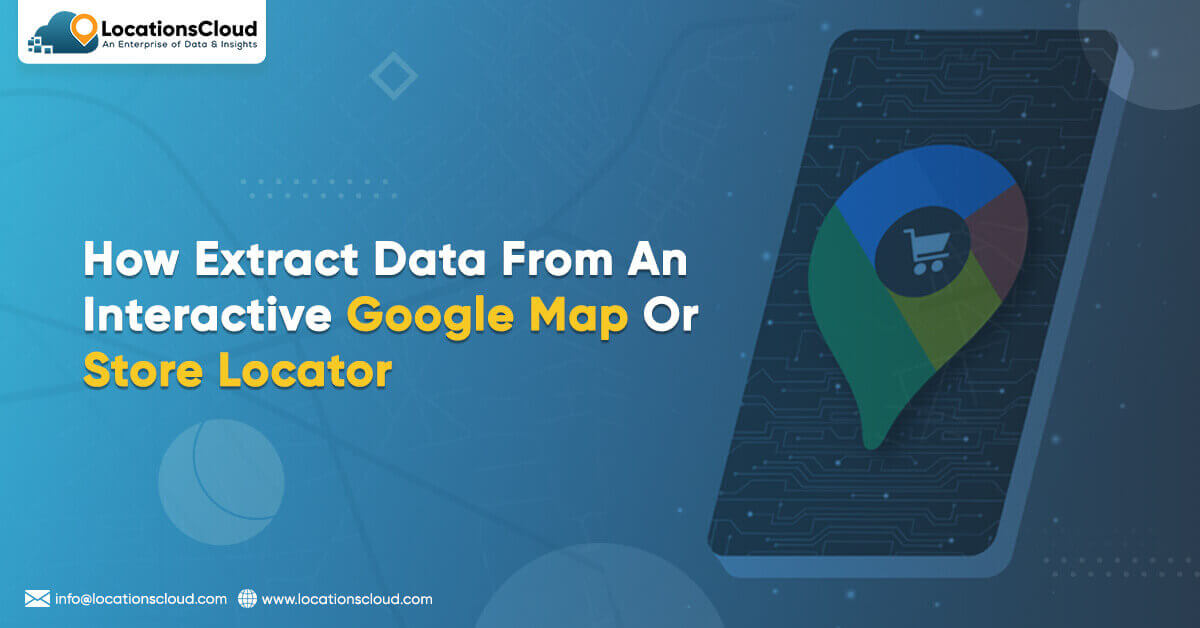
Today’s market is fast-moving and spread out all over the place. For a business to do well, it’s super important to know how what people want can change from one area to another. Old-school ways of guessing what’ll sell, which mostly look at past sales, aren’t enough anymore because they don’t catch the little but important differences in what customers do in different spots. That’s where location information makes a difference. It allows businesses to make smarter choices based on solid facts and keep the right products in stock. This blog will help us understand how location data can forecast the future of products and the responsible use of the data.
About Location Data
Location data is information about where a specific device or person is available on the map. It can come from different sources, like:
- GPS data: Smartphones and smart devices are equipped with GPS, which stands for Global Positioning System. This technology allows users to determine their precise location information.
- IP addresses: IP addresses provide a general idea of a user’s location based on their internet connection but are less accurate than GPS.
- Cell tower triangulation: This method utilizes the signal strength from nearby cell towers to estimate a user’s location.
Benefits of Location Data
Location data offers numerous benefits to businesses, which include but are not limited to:
- Personalized Customer Engagement: By understanding where customers spend their time, businesses can create the right marketing message to the right audience and offers that best align with their habits and preferences.
- Improved Decision-Making: Location data can provide valuable insights for strategic decisions, like where to open a new store or service offerings.
- Efficient Logistics and Operations: In industries such as delivery and warehousing, utilizing real-time location data can optimize routing, thus reducing time and expenses.
- Competitive Analysis: Location data can provide insights into where competitors are seeing success, which can inform a business’s strategy.
- Risk Assessment: For insurance companies or real estate developers, understanding a locality’s historical and current situation can help evaluate potential risks.
- Customer Analytics: Patterns in location data can reveal trends in customer behaviour, helping businesses anticipate needs and plan effectively.
Transforming Demand Forecasting Through Location Intelligence
By harnessing the power of location intelligence, businesses can not only anticipate product demand across different regions but also refine their marketing, distribution, and strategic planning to better meet consumer needs.

Identify Consumer Trends
Businesses can use location data to understand more about people’s behaviors. They can learn about potential customers’ buying, lifestyles, and likes, which helps spot new trends and make decisions. Based on the facts, businesses can better shape their products or services to suit customers’ needs. Businesses can know more about their customers by integrating location data with other information, such as what people talk about on social media. They can understand customers’ experiences better and meet their needs more precisely and faster while respecting privacy rules. This combined data gives businesses a 360-degree view of customer behavior that’s more detailed than what they would get from traditional data analysis.
Seasonal Analysis
Location data helps businesses understand how customers’ shopping preferences change with the seasons. This data shows where and when people gather at different times of the year, showing where demand could go up. For example, if more people go to the beach or resorts during summer, businesses in those areas know they may get busy. From location data, businesses can see what customers tend to favors during specific seasons. For instance, seeing more people head to ski resorts during winter might mean more demand for winter sports gear. Past location data can show businesses when customer behavior patterns might mean a rise or drop in demand for certain products or services. Location data information helps businesses have enough stock to meet expected demand and design marketing campaigns to reach the right people at the right time, making their advertising more potent.
Traffic Patterns
Location data helps figure out where lots of people go and when they go there, which can tell businesses when and where certain products might be needed more. If location data shows that many people go to a beach on weekends, a store nearby might stock up on sunblock and beach toys for those days. When data tells us that lots of people drive to the city for work, coffee shops along the way might prepare for a morning rush with more coffee and breakfast items. Location data can show when people start going to shopping malls more, which might be before the holidays. Shops can use this info to have more holiday-related products ready. If there’s a big event like a concert or sports game, location data tells stores they might need more snacks and drinks because many people will be in the area.
Geofencing Marketing
Geofencing refers to using location data to set up a virtual boundary or “fence” around a particular area. When a customer’s phone enters this area, it can trigger certain events, like sending a marketing message to them. This can be very helpful for businesses to predict product demand. If businesses see that certain people often enter their geofence and use their deals, they might find out they need to stock up more on the products these loyal customers love. During peak times like a lunch hour or just before a game starts at a nearby stadium, businesses can use geofencing to send out promotions that drive demand and sales. Businesses can set up a geofence around a competitor’s location. When customers enter these areas, they can send promotional messages to entice those users to their businesses instead, increasing demand for their products.
Distribution Efficiency
Location data helps improve how products are sent out and delivered by showing where and when customers want these products. If they know certain areas order more products or some streets are busy at certain times, they can plan routes to avoid delays, saving time and fuel. Location data tells businesses where most of their customers live or work, helping them decide where to store their products closer to these places. By looking at where and when orders are made, businesses can predict which products will be in demand in different areas. Location data helps businesses plan the best routes for delivery trucks. If location data shows a sudden increase in demand for a product in a specific area, maybe because of a local event or a change in weather, businesses can quickly restock in that area to meet customer needs.
An Example of Winter Clothing Inventory
Imagine a clothing retailer with stores nationwide. Traditionally, they might predict winter clothing demand based on historical sales data alone. However, incorporating location data into their forecasting model reveals:
- Higher demand for winter jackets in northern regions: This information allows the retailer to stock up on winter jackets in these areas while potentially reducing stock in warmer southern regions.
- Increased demand for specific types of winter clothing: By analyzing regional weather patterns, the retailer can predict higher demand for snow boots in areas with frequent snowfall and adjust their inventory accordingly.
Ethical Consideration and Responsible Data Use
Location data can be very helpful, but it’s important to use it in a way that’s fair and respects people’s privacy:
Transparency and user consent:
Companies must be clear about collecting, keeping, and using location information. People should fully understand and agree on how their data is used.
Data anonymization and security:
It’s important to keep the data secure and ensure it doesn’t show personal details about individuals.
Compliance with regulations:
Companies must ensure they follow all the privacy laws in their workplace.
By sticking to these important rules, companies can use location data correctly, helping them predict what customers want more accurately and improve their services while protecting privacy.
Conclusion
In today’s changing market, location data helps businesses understand what customers in different areas like and want. Using this important information, businesses can better manage their stock, make smart choices based on data, and grow steadily in various places. As long as businesses focus on using data ethically and responsibly, location data can change how they predict what customers will want. Here’s where an expert comes in handy! LocationsCloud, a specialist in location intelligence, seamlessly helps businesses predict future product demand. They ensure your data practices respect privacy norms while unlocking powerful insights from location data. With LocationsCloud, you’re not just ready for the future of demand forecasting; you’re leading it!



